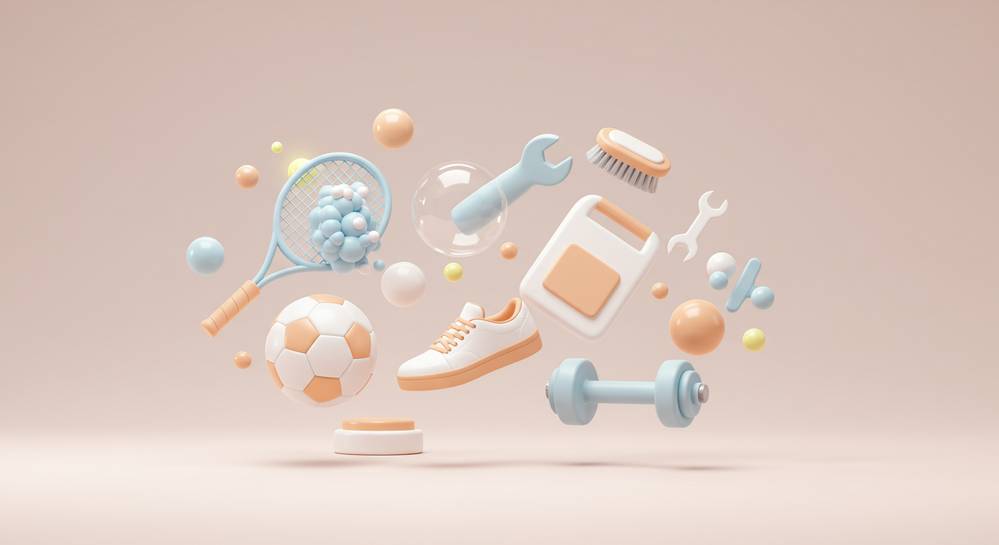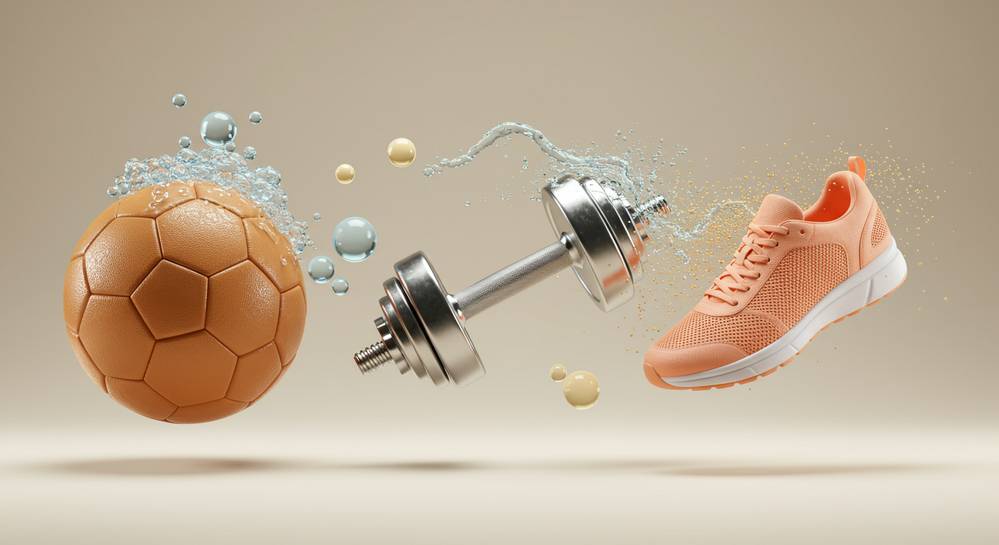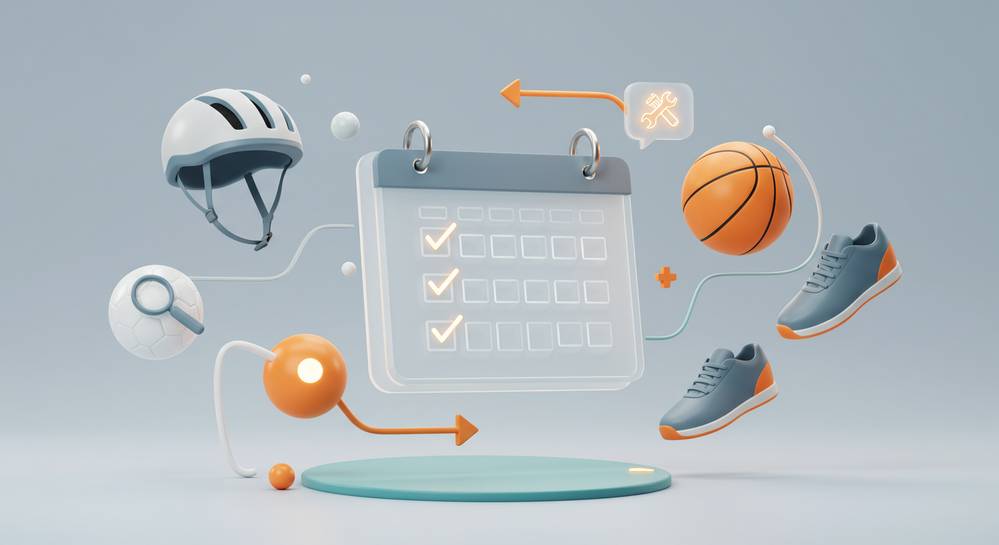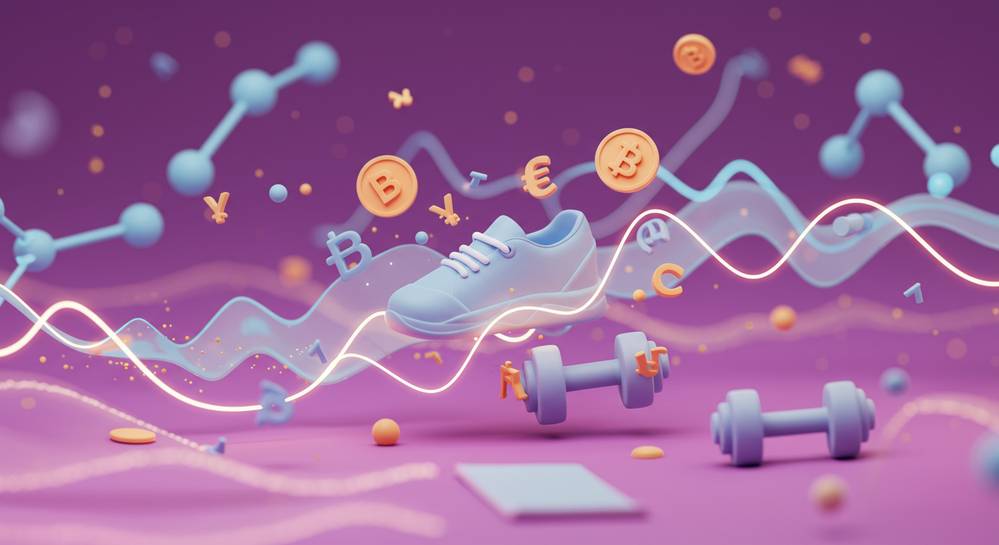Properly caring for your athletic gear is crucial for maximizing its lifespan and ensuring you perform at your best. Neglecting it can lead to decreased effectiveness and costly replacements. This guide provides essential strategies on how to maintain your sports equipment, helping you protect your investment and stay safe while playing the sports you love.
The fundamentals of sports equipment care

Proper sports gear maintenance is the bedrock of peak performance and safety. It goes beyond simple tidiness. Adopting a consistent post-activity routine directly impacts your game and wallet. Understanding how to maintain your sports equipment properly prevents premature wear, saving you from costly replacements and ensuring reliability when you need it most. This discipline is what separates amateur care from professional readiness.
The foundation of effective equipment maintenance rests on three core principles. Consistently applying these steps is the single most important factor in extending the life of your gear. This simple ritual ensures it remains safe and effective for every session.
- Clean Immediately: Wipe down hard surfaces and air out fabrics as soon as possible after use. This crucial first step stops corrosive sweat and dirt from degrading materials.
- Dry Thoroughly: Never store damp equipment. Complete air drying is essential to prevent mold, mildew, and rust that can permanently ruin your investment.
- Inspect Regularly: Systematically check for wear and tear. Look for frayed straps, small cracks, or loose stitching to catch minor issues before they become major failures on the field.
Cleaning techniques for different materials

Different materials demand specific cleaning methods to prevent irreversible damage. Using the wrong product can ruin expensive gear, as harsh chemicals weaken plastics and improper washing shrinks technical fabrics. Tailoring your approach is essential for preserving integrity and function. Mastering how to maintain your sports equipment starts with understanding the needs of each material you own, from high-tech apparel to classic leather.
Caring for fabrics and apparel
Wash pads, jerseys, and protective clothing in cold water on a gentle cycle. Use a sports-specific detergent designed to break down sweat and bacteria effectively. Crucially, avoid fabric softeners as they clog the pores of moisture-wicking fabrics, reducing their performance. Always hang these items to air dry instead of using a high-heat dryer, which can damage elastic fibers and logos.
Maintaining leather goods
For items like baseball or boxing gloves, wipe them down with a damp cloth. Use a dedicated leather cleaner for stubborn grime. Afterward, apply a quality leather conditioner to keep the material supple and prevent it from drying out and cracking. Allow them to air dry completely away from direct heat sources to avoid warping the material.
Cleaning helmets and hard plastics
Use a simple solution of mild soap and warm water to clean helmets, pads, and other hard components. A soft-bristled brush can help remove dirt from tight crevices and vents. Ensure every part is completely dry before storage. This step is vital to prevent rust from forming on metal parts like screws, snaps, or buckles.
Proper storage for longevity and readiness
How you store your equipment is just as important as how you clean it. Improper storage can undo all your cleaning efforts, leading to damage from moisture, pests, or physical stress. The ideal storage environment is a cool, dry, and well-ventilated area away from direct sunlight. This final step in your maintenance routine ensures your gear is always game-ready and in peak condition.
Adopting smart storage habits is a key part of how to maintain your sports equipment. These practices promote air circulation, prevent harmful moisture, and protect the structural integrity of your gear. Follow these essential rules for effective sports equipment storage.
- Do not pile gear. Stacking heavy items on top of each other can cause equipment like helmets or pads to warp and lose their shape.
- Use ventilated storage. Opt for open shelving, mesh bags, or specialized sports equipment racks to promote air circulation.
- Avoid sealed containers. Storing gear in airtight plastic bins can trap residual moisture, encouraging the growth of mold and mildew.
- Keep it off the floor. Use hooks and shelves to keep equipment away from concrete floors, which can be a source of moisture.
Creating a routine inspection and repair schedule

Proactive maintenance is far more effective than last minute reactive repairs. Establishing a regular schedule for inspecting your equipment helps you catch minor issues before they become major, safety compromising problems. A routine check ensures your gear is always ready for action and saves you from unexpected failures during play. This is a vital part of knowing how to maintain your sports equipment.
Create a pre and post season checklist
Before a new season begins, perform a thorough inspection of all your equipment. Check for proper fit, function, and any signs of degradation that may have occurred during the off season. At the end of the season, conduct another detailed check. Perform any necessary repairs or deep cleaning before storing it away for the long term.
Know when to repair or replace
Minor issues like a loose strap or a small tear can often be repaired at home. However, it is crucial to recognize when an item is beyond safe use. For protective gear like helmets, any crack in the shell means it must be replaced immediately. Its structural integrity is compromised. Never take risks with equipment designed to keep you safe.
Consistent care is the key to unlocking the full potential and lifespan of your athletic gear. By integrating these cleaning, inspection, and storage habits into your routine, you ensure safety and peak performance every time you play. For more expert insights into the world of sports, explore Sporting Currents and stay ahead of the game.


